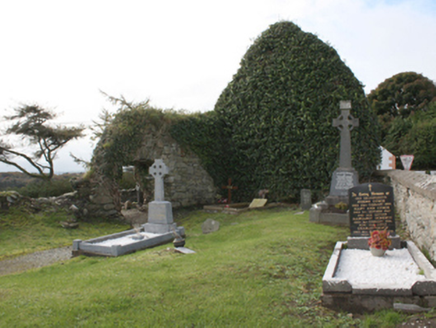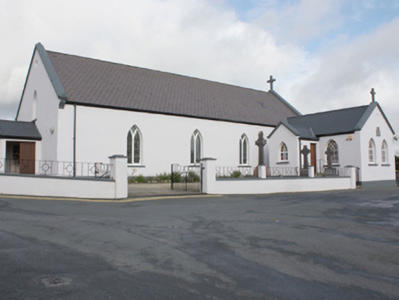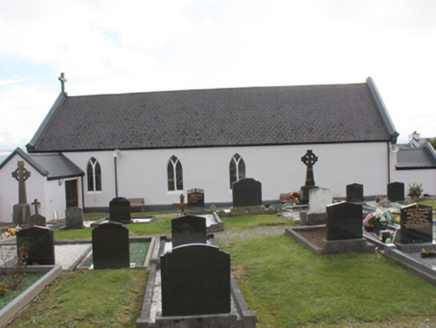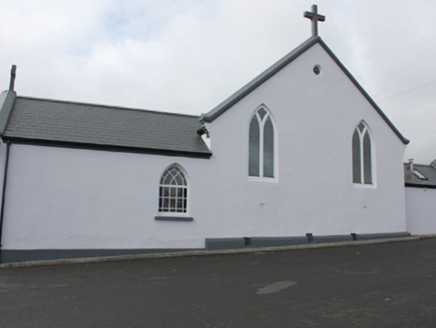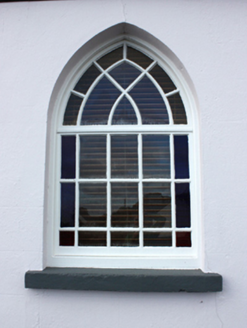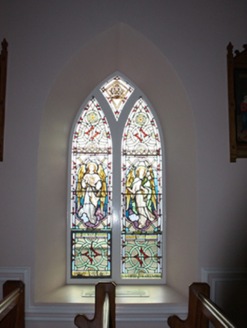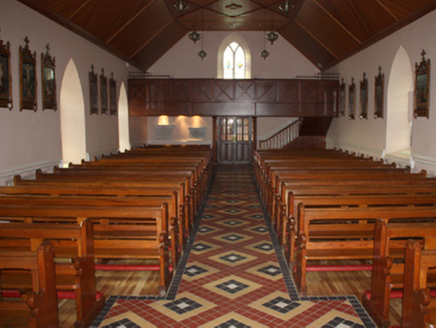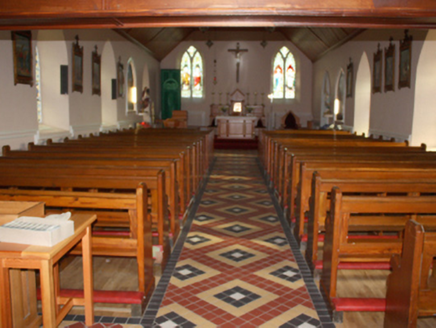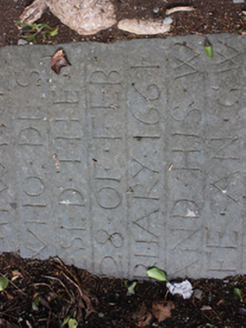Survey Data
Reg No
40903904
Rating
Regional
Categories of Special Interest
Archaeological, Architectural, Social
Original Use
Church/chapel
In Use As
Church/chapel
Date
1780 - 1790
Coordinates
245870, 427023
Date Recorded
17/10/2008
Date Updated
--/--/--
Description
Freestanding six-bay hall-type Catholic church, built 1782, with small sacristy to south and entrance porch to west. Pitched artificial slate roof with gable coping, skew ends, cruciform finials and replacement rainwater goods. Smooth rendered ruled-and-lined walls with smooth rendered plinth course. Pointed-arch window openings with timber Y-tracery and stained glass. Pointed-arch window openings to sacristy with timber multiple pane decorative glazing with margin lights. Square-headed door opening to porch with battened timber doors. Interior with timber sheeted ceiling and gallery to west. Set within own grounds with modern graveyard to north and bounded by smooth rendered walls with rendered coping surmounted by cast-iron railings, substantial gate piers with shouldered rendered coping and double leaf cast-iron gates. A medieval abbey in ruins containing a graveyard with many eighteenth and nineteenth century graves is located across the road to the south. According to a plaque on the external wall Eoghan son of Niall of the Nine Hostages was buried there in 465 A.D. A grave slab to the south of the abbey ruins near the entrance contains an inscription ‘…28 of February 1661..’. The graveyard is bounded by a rubble stone wall with render on the external side and rendered coping, substantial rubble stone gate piers and double leaf cast-iron gates.
Appraisal
A simple but handsome pre-Emancipation church which has been recently renovated. It is depicted on the Ordnance Survey first edition six-inch map, surveyed 1834, but on a significantly different plan, suggesting that it was radically refurbished in the mid-nineteenth century. It is greatly enhanced by the existence of the adjoining medieval abbey in ruins and burial markers ranging from medieval to early modern period, marking it as a site of religious worship and burial for many centuries.
